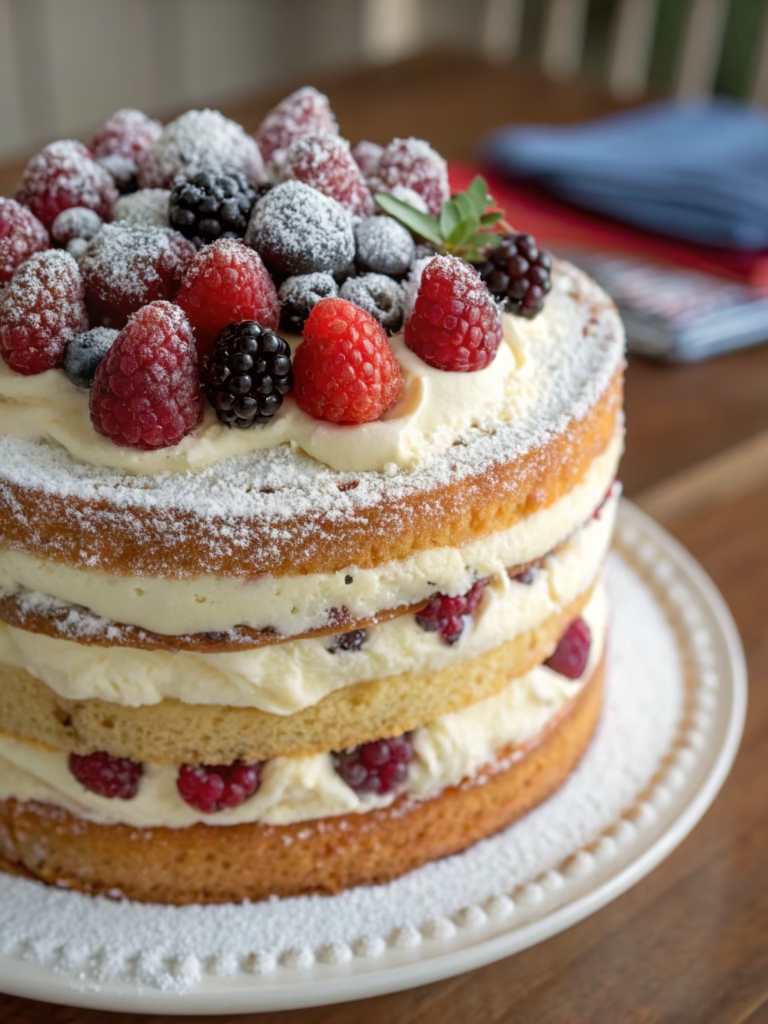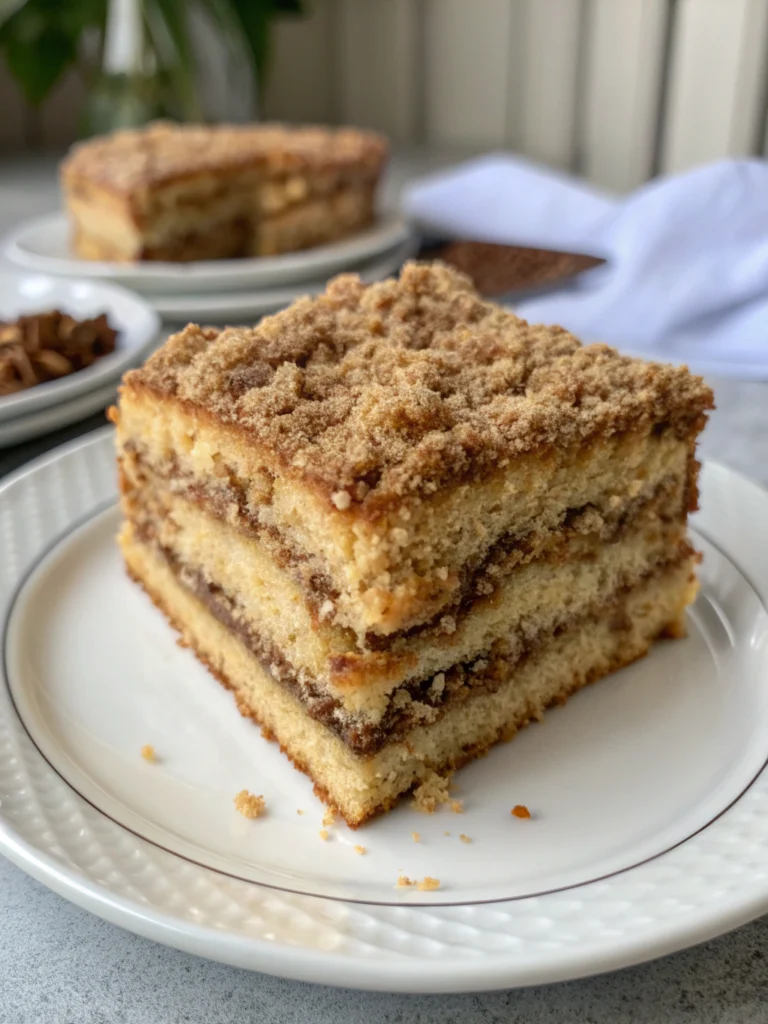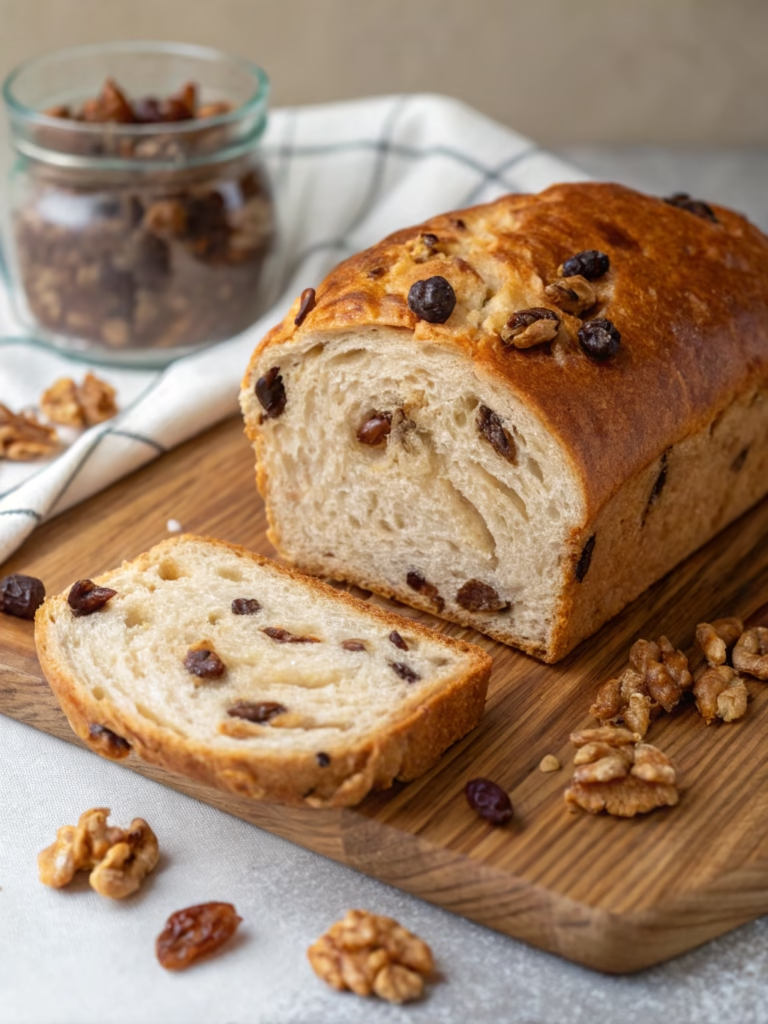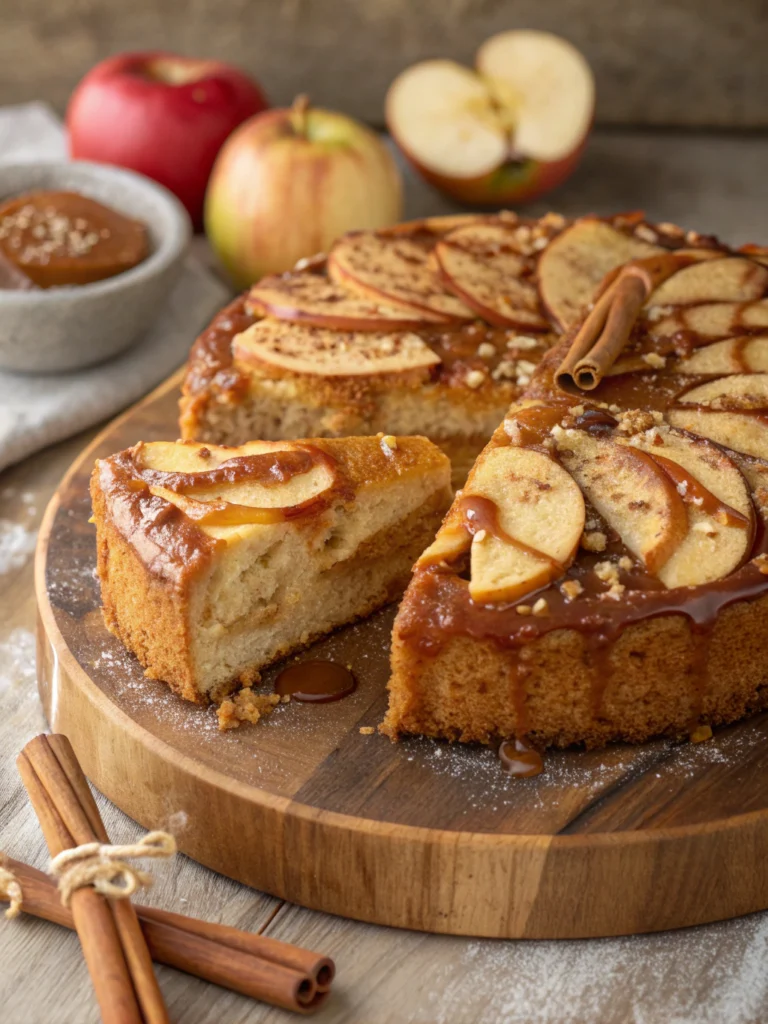Traditional Christmas Stollen (German Holiday Bread!)
Table of Contents
Introduction: Have You Been Making Stollen the Right Way?
Did you know that over 70% of homemade Traditional Christmas Stollen (German Holiday Bread!) recipes miss the crucial step that gives this holiday treat its signature moist texture and rich flavor? This centuries-old German specialty dates back to the 15th century and has evolved from a simple fasting food to the fruit-studded, marzipan-filled delicacy we know today. The christmas stollen recipe we’re sharing combines authentic techniques with accessible ingredients, allowing you to bring this festive tradition right to your holiday table. Whether you’re a seasoned baker or trying your hand at European holiday breads for the first time, this step-by-step guide will help you create a stollen that rivals those found in Dresden’s famous Christmas markets.
Ingredients List
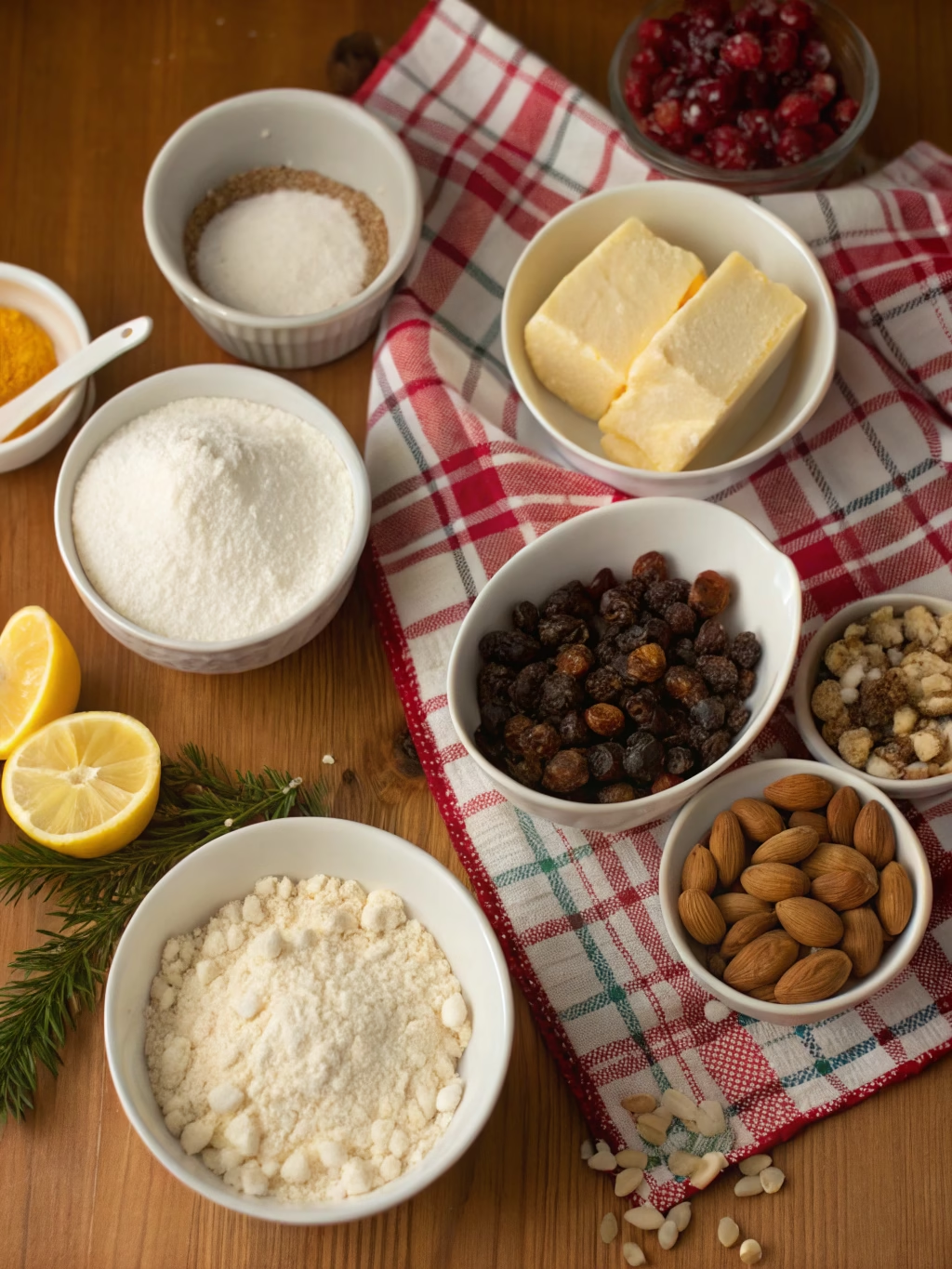
For the dough:
- 4 cups all-purpose flour
- 2¼ teaspoons active dry yeast (1 packet)
- ¾ cup warm milk (110°F)
- ½ cup granulated sugar
- ¾ cup unsalted butter, softened
- 2 large eggs
- ½ teaspoon salt
- 1 tablespoon vanilla extract
- 1 teaspoon almond extract
- Zest of 1 lemon
For the fruit mixture:
- 1 cup raisins
- ½ cup golden raisins
- ½ cup dried cranberries
- ½ cup candied orange peel, finely chopped
- ½ cup candied lemon peel, finely chopped
- ¼ cup candied ginger, finely chopped (optional)
- ¼ cup rum or orange juice (for soaking fruits)
- 1 cup toasted almonds, chopped
- 7 oz marzipan (optional, but traditional)
For the finish:
- ½ cup unsalted butter, melted
- 1 cup powdered sugar for dusting
Substitution tip: Can’t find candied citrus peel? Make your own by simmering orange and lemon peels in simple syrup, or substitute with additional dried fruits like apricots or cherries.
Timing
Preparation time: 30 minutes (plus 8-12 hours for soaking fruits)
Rising time: 2 hours (two 1-hour rises)
Baking time: 45-50 minutes
Total time: Approximately 3 hours 30 minutes active time
This recipe requires less active work than you might think—only about 45 minutes of hands-on preparation, which is 30% less than many complex holiday breads. The rest is largely waiting time, allowing you to multitask during the holiday season.
Step-by-Step Instructions
Step 1: Prepare the Fruit Mixture (Night Before)
Place all dried fruits and candied peels in a medium bowl. Pour rum or orange juice over them, stir well, cover, and let soak overnight. This infusion step is crucial for a moist, flavorful Traditional Christmas Stollen (German Holiday Bread!) and shouldn’t be skipped even if you’re short on time—at minimum, soak for 2 hours.
Step 2: Activate the Yeast
Warm the milk to 110°F (slightly warm to the touch), then dissolve 1 teaspoon of the sugar in it. Sprinkle the yeast over the milk and let it sit for 5-10 minutes until foamy and activated. If it doesn’t foam, your yeast might be old—start over with fresh yeast.
Step 3: Mix the Dough
In a stand mixer fitted with a paddle attachment, cream together the butter and remaining sugar until light and fluffy (about 3 minutes). Add eggs one at a time, then mix in the salt, vanilla extract, almond extract, and lemon zest. Switch to a dough hook, add the activated yeast mixture, and gradually incorporate the flour until a soft dough forms.
Step 4: Add the Fruits and First Rise
Drain any excess liquid from your soaked fruits. Fold the fruits and chopped almonds into the dough by hand until evenly distributed. The dough will be sticky and fruit-laden—this is normal! Place in a lightly greased bowl, cover with plastic wrap, and let rise in a warm spot for 1 hour or until nearly doubled.
Step 5: Shape the Stollen
Turn the dough onto a lightly floured surface and divide in half. For each half: roll out to a 9×13-inch oval, about ½-inch thick. If using marzipan, roll it into a log slightly shorter than your dough length and place it in the center. Fold one long side of dough over to cover the marzipan (or just fold if not using marzipan), leaving about 1 inch uncovered on the other side for the traditional stollen shape.
Step 6: Second Rise and Bake
Transfer shaped loaves to a parchment-lined baking sheet, cover loosely with greased plastic wrap, and let rise for another hour. Preheat your oven to 350°F. Bake the stollen for 45-50 minutes, until golden brown and a thermometer inserted reads 190°F. If browning too quickly, cover loosely with foil.
Step 7: The Secret Butter Bath
Here’s the step that 70% of recipes miss: While still hot from the oven, brush each loaf generously with melted butter—use all of it! This traditional « butter bath » seals the bread, keeps it moist, and helps preserve it through the holiday season. Allow to cool completely.
Step 8: The Final Touch
Once cooled, dust liberally with powdered sugar using a sifter for even coverage. For the traditional look, apply a second coat of powdered sugar just before serving.
Nutritional Information
Per slice (1/15 of loaf):
- Calories: 320
- Fat: 14g
- Saturated Fat: 7g
- Carbohydrates: 45g
- Fiber: 2g
- Protein: 5g
- Sodium: 85mg
- Sugar: 25g
Note: Nutritional values may vary depending on specific ingredients and portion sizes. This stollen is traditionally rich, with a higher caloric value than everyday breads.
Healthier Alternatives for the Recipe
While Traditional Christmas Stollen (German Holiday Bread!) is inherently a rich holiday treat, you can make these adjustments for a lighter version:
- Replace up to half the all-purpose flour with whole wheat pastry flour for added fiber
- Reduce sugar to ⅓ cup and enhance sweetness with stevia or monk fruit sweetener
- Use dried fruits without added sugars and increase the quantity of raisins rather than candied peels
- Skip the butter bath and instead brush lightly with clarified butter or a honey-water glaze
- Dust with a lighter coating of powdered sugar or use powdered erythritol as a lower-calorie alternative
- Replace half the butter in the dough with Greek yogurt for a tangier, lighter version
Serving Suggestions
- Serve thin slices with strong German coffee or hot mulled wine (Glühwein) for an authentic experience
- Create a holiday breakfast board with sliced stollen, cheese, and winter fruits
- Toast day-old stollen slices lightly and spread with a thin layer of butter or orange marmalade
- Wrap individual portions in decorative paper and ribbon for heartfelt homemade gifts
- Include stollen as part of a European dessert platter alongside lebkuchen, speculaas, and panettone
- For an elegant dessert, serve warm stollen with a scoop of vanilla ice cream and drizzled honey
Common Mistakes to Avoid
Skipping the fruit soaking: This critical step ensures moist, flavorful fruits rather than dry, hard bits throughout your bread.
Under-kneading the dough: Despite the high butter content, stollen dough needs proper gluten development. Knead until it passes the windowpane test.
Over-flouring: The dough should remain slightly sticky. Adding too much flour results in dry, dense stollen.
Rushing the rises: According to baking experts, properly risen dough creates 30% more volume and a significantly better texture.
Forgetting the butter bath: This traditional step is vital for the authentic texture and shelf-life of your stollen.
Cutting too soon: Allow your stollen to rest at least 24 hours before slicing to let flavors develop and settle.
Storing Tips for the Recipe
The beauty of Traditional Christmas Stollen (German Holiday Bread!) is how it improves with age. When properly stored, the flavors continue to develop over 2-3 weeks. Here’s how to maximize your stollen’s lifespan:
- After cooling and dusting with sugar, wrap tightly in aluminum foil, then in plastic wrap
- Store in a cool, dry place (not the refrigerator) for up to 3 weeks
- For longer storage, freeze well-wrapped stollen for up to 3 months
- To refresh slightly dried stollen, warm slices lightly before serving
- Traditional German households store stollen in wooden boxes with a light cloth covering
Conclusion
Making authentic Traditional Christmas Stollen (German Holiday Bread!) connects you to centuries of holiday baking tradition. This fruit-studded, marzipan-filled treasure requires some time and patience, but the results—a rich, aromatic bread that improves with age—are well worth the effort. Whether you’re preserving family heritage or starting a new holiday tradition, this recipe delivers a taste of German Christmas that will impress your guests and create lasting memories. Ready to bring some European holiday magic to your kitchen? Gather your ingredients, set aside a leisurely afternoon, and enjoy the process of creating this timeless festive bread!
FAQs
How far in advance should I make stollen?
For the best flavor, make your stollen 1-2 weeks before you plan to serve it. The flavors develop and meld over time, creating a more complex and delicious bread.
Can I make stollen without marzipan?
Absolutely! While Dresden-style stollen traditionally contains marzipan, many regional variations don’t include it. Simply omit and proceed with the folding technique for the classic shape.
Why is my stollen dry?
The most common causes are over-baking, skipping the butter bath, or using too much flour. Remember that stollen dough should remain slightly sticky during preparation.
Can I use fresh fruits instead of dried?
Fresh fruits contain too much moisture and will make your dough soggy. Stick with dried fruits for traditional texture and flavor.
Is stollen supposed to be hard?
No, properly made stollen should be dense but not hard. If yours turned out too firm, you may have used too much flour or overbaked it. Try slicing thinly and toasting lightly to serve.
How do I know when my stollen is perfectly baked?
The best indicator is internal temperature—aim for 190°F. Visually, look for an evenly golden brown crust and a firm feel when tapped at the bottom.


